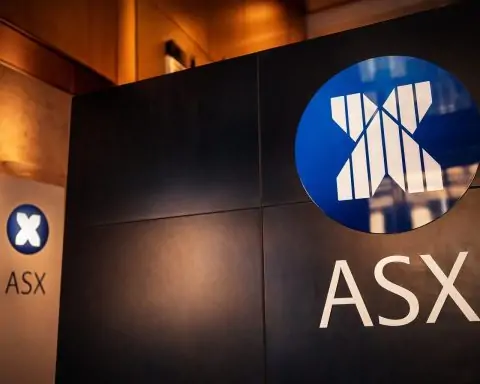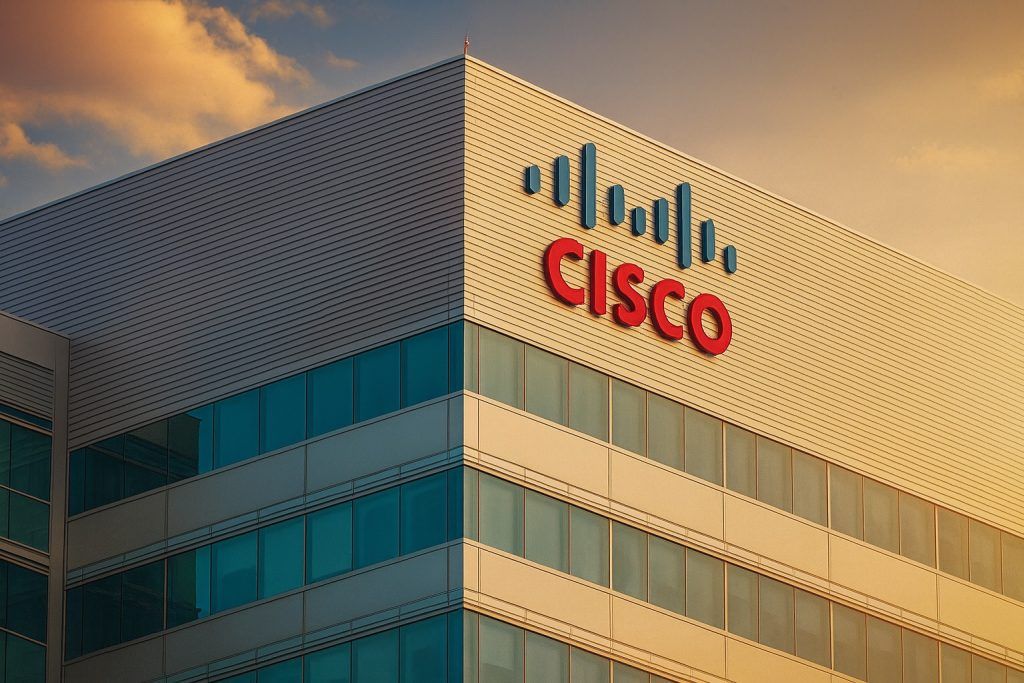Intel (NASDAQ: INTC) heads into Friday’s U.S. session under pressure, with investors weighing fresh Oregon job cuts, heavy AI investment, and a broader tech selloff that has hit chipmakers hard.
Quick take — Intel stock before the bell
- Pre‑market: Intel is trading around $34.6 in pre‑market, down roughly 3.7% from Thursday’s close of $35.91 as of about 7:30 a.m. ET. [1]
- Thursday session: INTC fell about 5% yesterday as part of a sharp tech-led selloff; major chip names like Intel, Nvidia, AMD and Broadcom all closed down roughly 3.5%–7%. [2]
- Fresh news today (Nov. 14):
- Intel will lay off another 669 workers in Oregon by year-end, on top of ~2,500 cuts earlier in 2025. [3]
- New analysis pieces highlight concerns over AI spending, margin pressure and falling earnings estimates, even after a Q3 earnings beat. [4]
- Several institutional investors disclosed big moves in INTC holdings, with some adding and others trimming positions. [5]
- Macro backdrop: U.S. stock futures are lower again this morning as hawkish Fed commentary dents hopes for a December rate cut, and tech/AI valuations face renewed scrutiny. [6]
All of this sets a tense stage for Intel stock as Wall Street opens.
1. Intel share price: pre‑market snapshot and key levels
Intel closed Thursday, November 13 at $35.91, according to both Yahoo Finance and multiple market data providers. [7]
- Pre‑market quote (approx.): $34.59, down about $1.32 or 3.7% from yesterday’s close. [8]
- 52‑week range: roughly $17.67 – $42.47, underscoring how far Intel has already bounced off last year’s lows while still trading well below its recent peak. [9]
Technical and quant-focused commentary this morning notes that:
- Intel recently fell back toward support in the mid‑$35 area, with at least one European market note flagging $35.50 as a key support zone and warning that the stock has slipped to a new four‑week low. [10]
- Short- and long-term moving averages have turned more cautious again after October’s post‑earnings rally, with the 50‑day average sitting around $34–35. [11]
Pre‑market prices can move quickly, so traders will be watching whether INTC holds that $35-ish support region or breaks lower once regular trading begins.
2. Fresh headline: 669 more job cuts in Oregon
The biggest company‑specific news hitting Intel today is another round of layoffs at its Oregon operations:
- Intel notified Oregon officials that it will lay off 669 additional workers at facilities in Hillsboro and Aloha by the end of 2025. [12]
- The chip giant has already cut around 2,500 positions at its Washington County campus earlier this year, bringing total announced 2025 cuts in the state above 3,100 roles. [13]
- An Intel spokesperson framed the move as part of efforts to become a “leaner, faster and more efficient company”, emphasizing long‑term competitiveness. [14]
Syndicated local reports across U.S. TV sites are echoing the same story this morning, highlighting:
- Intel’s need to cut costs as it competes in semiconductors and AI with Nvidia and AMD. [15]
- The context of an earlier decision to suspend its dividend starting in Q4 2025, another sign of prioritizing cash for restructuring and capital spending. [16]
Market implications before the open
For investors, the layoffs are a double‑edged sword:
- Positive angle: reinforces Intel’s determination to deliver on the multi‑year cost‑cutting plan that helped Q3 margins rebound. [17]
- Negative angle: underscores how deep the restructuring has become (and how challenged the core PC business remains), while also raising local political and labor risks in its key R&D hub.
Given today’s broader risk‑off tone in tech, the market appears to be reading the news more as stress than as a clean bullish cost‑cutting signal, at least in pre‑market trading.
3. AI push and Q3 earnings: why sentiment has soured again
Intel’s latest results were, on paper, better than feared:
- Q3 2025 revenue: about $13.7 billion, up 3% year‑over‑year, and slightly ahead of Wall Street expectations. [18]
- GAAP EPS: approximately $0.90;
- Non‑GAAP EPS: $0.23, beating consensus estimates and marking a swing back into positive territory versus a loss a year earlier. [19]
Management credited:
- Aggressive cost cuts (including workforce reductions and lower R&D/MG&A spend). [20]
- Resilient demand for data center and AI products, even as lower‑end PC chips remain under pressure. [21]
However, commentary since the earnings release has become more cautious:
- Intel has warned of supply shortages on its older Intel 7 and 10 nodes and said it will prioritize high‑margin data center CPUs over consumer PC parts, which likely means higher prices and tighter availability for some client chips, and a near‑term drag on the Client Computing segment. [22]
- A prominent German‑language market overview today argues that Intel’s ambitious AI investments and fab expansion are colliding with skepticism about future profitability, noting the recent selloff has pushed shares to a four‑week low and set up an important test around the mid‑$30s. [23]
- Zacks highlights that earnings estimates for 2025 and 2026 have been trending down, questioning whether the recent rally in INTC is sustainable. [24]
Guidance and profitability expectations
Across SEC filings and analyst round‑ups:
- Intel has guided to Q4 2025 EPS around $0.08 (non‑GAAP), a modest profit but not yet a full earnings recovery. [25]
- Street consensus still calls for a small full‑year loss (around –$0.11 EPS) in 2025, reflecting the heavy cost of restructuring and AI‑led capex. [26]
That combination — earnings beats today but thin near‑term profits plus rising capex — is a core reason why the stock has become especially sensitive to any negative macro moves or headline risk, like this morning’s layoffs.
4. Strategy shifts: board refresh, AI leadership and government stake
New independent director
On November 10, Intel appointed Dr. Craig H. Barratt to its board of directors as an independent member. Barratt brings more than 30 years of semiconductor and networking leadership, including CEO‑level experience. [27]
The appointment is generally seen as:
- A way to bolster technical and operational oversight during a high‑risk turnaround.
- Supportive of Intel’s foundry and networking ambitions as it competes with TSMC and advanced AI chip suppliers.
CEO takes direct control of AI efforts
In parallel, recent wire reports say CEO Lip‑Bu Tan is taking direct oversight of Intel’s AI initiatives after the departure of its chief technology officer to OpenAI, underscoring how critical AI is to the company’s identity. [28]
This move aims to:
- Tighten alignment between AI product strategy, foundry investments, and the company’s broader turnaround.
- Reassure investors after rivals like AMD and Nvidia laid out very aggressive AI growth roadmaps at recent events. [29]
U.S. government and Nvidia stakes: powerful but political backers
Intel’s capital structure is now unusually shaped by strategic investors:
- In August 2025, the U.S. government acquired a 9.9% equity stake in Intel via an $8.9 billion investment funded by CHIPS Act grants and Secure Enclave money, at $20.47 per share, with a warrant that could eventually lift the stake to 15%. [30]
- Around the same time, Nvidia agreed to invest $5 billion in Intel by purchasing stock and deepening a strategic partnership that includes co‑developing PC and data‑center chips, and having Intel manufacture some custom data‑center silicon. [31]
These moves:
- Strengthen Intel’s balance sheet and help fund massive fab construction.
- Tie the company’s future more tightly to U.S. industrial policy and AI leadership, but also introduce political and execution risk, which several commentators have flagged as a concern. [32]
For traders this morning, these big‑picture supports are in the background, but they help explain why Intel is still getting attention even as sentiment turns cautious.
5. Wall Street view: mostly “hold/reduce” with limited upside
Across research aggregators:
- MarketBeat data show just 2 Buy ratings, with the bulk of analysts rating Intel as Hold or Sell, and an overall consensus of “Reduce”. [33]
- The average 12‑month price target clusters around $34–35, very close to where the stock is trading pre‑market today, with targets ranging roughly from $20 to $50 depending on the house. [34]
Recent rating actions have included:
- Multiple firms raising targets but staying neutral or underweight, reflecting recognition of Intel’s progress but skepticism that it can match AI leaders’ profitability. [35]
- At least one high‑profile downgrade calling Intel’s earlier 2025 rally “unsustainable”, urging caution as earnings power remains weak relative to the stock’s rebound. [36]
Today’s pre‑market weakness fits that narrative: any bad macro day or unsettling company headline tends to hit INTC harder, because the valuation already bakes in a substantial turnaround.
6. Institutional flows: who’s buying, who’s trimming
New 13F‑style disclosures published this morning give a glimpse of how big money is positioning:
- Impax Asset Management Group increased its Intel stake by over 1,000% in Q2, adding about 297,000 shares to reach more than 325,000 shares. [37]
- Fiera Capital disclosed a new position of over 400,000 INTC shares, worth nearly $10 million at recent prices. [38]
- Banco Bilbao Vizcaya Argentaria (BBVA) reported cutting its Intel position, while Mitsubishi UFJ Trust & Banking also trimmed holdings. [39]
Taken together, the filings reinforce a picture of mixed institutional conviction:
- Some managers are leaning into Intel’s depressed valuation and government/Nvidia support.
- Others appear to be locking in gains after a strong year‑to‑date rebound or reallocating within the semiconductor space.
These flows are slow‑moving, but they can influence how the stock trades around key technical levels — especially on volatile days like today.
7. Sector & macro backdrop: tech under pressure again
Intel’s pre‑market drop is happening against a rough macro and sector backdrop:
- U.S. index futures are down this morning, with Nasdaq 100 futures off around 0.4–1.3%, extending Thursday’s slump. [40]
- Thursday saw the sharpest daily decline in the major indexes in more than a month, driven by worries that the Fed may delay or skip a December rate cut after hawkish comments from multiple officials. [41]
- A wave of concern over stretched AI and big‑tech valuations has re‑emerged, with names like Tesla, Palantir, Nvidia, AMD, Broadcom and Intel all dropping sharply yesterday and pointing lower again pre‑market. [42]
In semiconductors specifically:
- Applied Materials is under pressure after warning about weaker China spending due to tighter export controls, putting additional pressure on the chip complex this morning. [43]
- AMD just projected huge long‑term growth in data‑center AI chips, upping competitive pressure on Intel in the very segment it is prioritizing. [44]
So a meaningful part of Intel’s pre‑market decline is macro and sector‑driven, not just about today’s company‑specific news.
8. What traders will be watching after the opening bell
When regular trading starts, Intel watchers are likely to focus on:
- Price action around $35
- Does the stock hold near $35–35.50, which technical analysts see as short‑term support, or does selling accelerate toward the low‑$30s? [45]
- Volume vs. recent sessions
- Heavy volume combined with a break of support would signal institutional selling; lighter volume dip might suggest more macro noise than company‑specific capitulation.
- Follow‑through from AI skepticism pieces
- Today’s European commentary and U.S. estimate‑cut reports will shape how much investors trust Intel’s AI and foundry story versus Nvidia/AMD’s offerings. [46]
- Reaction to Oregon layoffs
- Local and political blowback is unlikely to move the stock intraday, but analysts will be modeling incremental cost savings and asking whether deeper cuts hint at more structural weakness in traditional PC businesses. [47]
- Upcoming catalysts
- Next week, Intel’s investor‑relations chief John Pitzer will appear at conferences hosted by RBC, UBS and Barclays, where any updated commentary on demand, supply shortages or AI roadmaps could reset expectations. [48]
9. Bottom line before today’s U.S. market open
Heading into the November 14 open, Intel stock sits at the crossroads of a powerful turnaround narrative and mounting investor doubt:
- The bull narrative:
- Government and Nvidia backing, an improving balance sheet, Q3 earnings that beat expectations, and a clear focus on AI, data center, and leading‑edge foundry technology. [49]
- The bear narrative:
- Fresh layoffs and dividend suspension, supply bottlenecks, cautious guidance, sliding earnings estimates, and a consensus rating anchored in “Hold/Reduce” with limited upside to current prices. [50]
On a day when tech and chip stocks are under broad pressure, the market is leaning toward the cautious side, pushing INTC lower in pre‑market trading.
As always, this overview is for information and news purposes only and is not investment advice. Anyone considering trading Intel today should factor in their own risk tolerance, time horizon, and independent research, especially given how quickly prices and macro conditions are moving.
References
1. finance.yahoo.com, 2. www.investopedia.com, 3. www.opb.org, 4. www.ad-hoc-news.de, 5. www.marketbeat.com, 6. www.reuters.com, 7. finance.yahoo.com, 8. finance.yahoo.com, 9. stockinvest.us, 10. www.ad-hoc-news.de, 11. www.marketbeat.com, 12. www.opb.org, 13. www.opb.org, 14. www.opb.org, 15. katu.com, 16. katu.com, 17. www.nasdaq.com, 18. www.intc.com, 19. www.sec.gov, 20. www.nasdaq.com, 21. www.networkworld.com, 22. www.networkworld.com, 23. www.ad-hoc-news.de, 24. www.zacks.com, 25. www.marketbeat.com, 26. www.marketbeat.com, 27. newsroom.intel.com, 28. www.marketscreener.com, 29. www.reuters.com, 30. www.intc.com, 31. www.investopedia.com, 32. www.barrons.com, 33. www.marketbeat.com, 34. www.marketbeat.com, 35. www.marketbeat.com, 36. www.barchart.com, 37. www.marketbeat.com, 38. www.marketbeat.com, 39. www.marketbeat.com, 40. www.reuters.com, 41. www.reuters.com, 42. www.investopedia.com, 43. www.reuters.com, 44. www.reuters.com, 45. www.ad-hoc-news.de, 46. www.ad-hoc-news.de, 47. www.opb.org, 48. www.intc.com, 49. www.nasdaq.com, 50. www.opb.org







